 Technology
Technology  Technology
Technology  Humans
Humans 10 Everyday Human Behaviors That Are Actually Survival Instincts
 Animals
Animals 10 Animals That Humiliated and Harmed Historical Leaders
 History
History 10 Most Influential Protests in Modern History
 Creepy
Creepy 10 More Representations of Death from Myth, Legend, and Folktale
 Technology
Technology 10 Scientific Breakthroughs of 2025 That’ll Change Everything
 Our World
Our World 10 Ways Icelandic Culture Makes Other Countries Look Boring
 Misconceptions
Misconceptions 10 Common Misconceptions About the Victorian Era
 Mysteries
Mysteries 10 Strange Unexplained Mysteries of 2025
 Miscellaneous
Miscellaneous 10 of History’s Most Bell-Ringing Finishing Moves
 Technology
Technology Top 10 Everyday Tech Buzzwords That Hide a Darker Past
 Humans
Humans 10 Everyday Human Behaviors That Are Actually Survival Instincts
 Animals
Animals 10 Animals That Humiliated and Harmed Historical Leaders
Who's Behind Listverse?

Jamie Frater
Head Editor
Jamie founded Listverse due to an insatiable desire to share fascinating, obscure, and bizarre facts. He has been a guest speaker on numerous national radio and television stations and is a five time published author.
More About Us History
History 10 Most Influential Protests in Modern History
 Creepy
Creepy 10 More Representations of Death from Myth, Legend, and Folktale
 Technology
Technology 10 Scientific Breakthroughs of 2025 That’ll Change Everything
 Our World
Our World 10 Ways Icelandic Culture Makes Other Countries Look Boring
 Misconceptions
Misconceptions 10 Common Misconceptions About the Victorian Era
 Mysteries
Mysteries 10 Strange Unexplained Mysteries of 2025
 Miscellaneous
Miscellaneous 10 of History’s Most Bell-Ringing Finishing Moves
10 Eerie Derelict Buildings Where Horrible Things Happened
The world is full of derelict buildings, many of which are in a truly dismal state of disrepair and give off an eerie, desolate vibe. Most of us will pass structures of this sort in the town or city we live in on a regular basis without even giving them a second thought, let alone wondering what events led them into their current dilapidated state.
Of course, lots of these buildings have been abandoned for fairly mundane reasons, but in some cases, the stories that lie behind them are darker and sadder. The following are ten derelict buildings with stories that ensure nobody will want to use them in the future.
10 Chateau Miranda
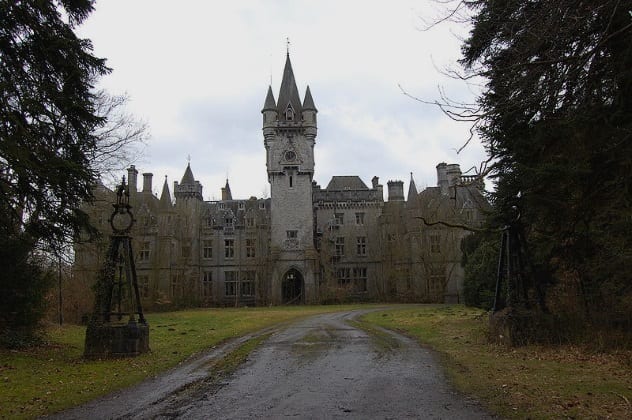
This neo-Gothic building in Celles, Belgium, was also known as Chateau de Noisy and was constructed between 1886 and 1907. The original plan was for the wealthy Liederkerke-De Beaufort family to use it as their summer home. However, the building was claimed for use as a base by the Nazis during World War II, and at one time, a number of German soldiers were living in it.[1] There is nothing particularly creepy about this, apart from the inherent creepiness of Nazis, but the chateau became one of the places where the Battle of the Bulge was fought, which meant that a number of men died there.
If the thought of the spirits of all of those dead soldiers roaming around a Gothic-looking building in the middle of nowhere isn’t unsettling enough, this chateau went on to be used as a place for sick children to stay after the war ended. It was referred to as a “holiday camp,” although it does not seem like a place that many kids would want to spend their holidays at. Inevitably, not all of the children who stayed there recovered from their illnesses, so the chateau became even more associated with death. Sadly, Chateau Miranda was demolished in 2017, meaning all of its ghosts had to find somewhere else to haunt.
9 Sanzhi UFO Houses
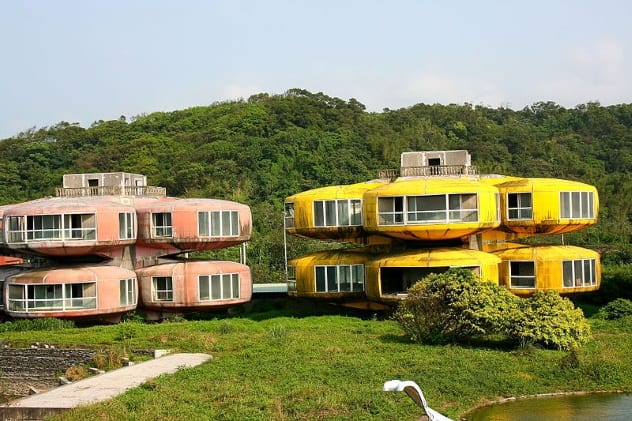
These futuristic pod-shaped buildings in New Tapei, Taiwan, were proof that modernism offers us no defense against creepiness. The Sanzhi UFO Houses looked like something we might expect to see in a 1950s sci-fi movie. Work on building them began in 1978, with the intention being for the site to be a resort once the houses were complete.[2] The idea was that officers in the US military who had been posted to the area would use the finished development, but nobody ever got to take a vacation there because work on it was scrapped two years after it began following a series of mysterious deaths among the construction crew.
It has been reported that some of the workers died in car accidents, while others committed suicide, but the precise reason for the seemingly cursed nature of the development has been a source of debate ever since. Some believe that the decision to split a sculpture of a Chinese dragon that was situated near the gates led to a curse, while others think that it was built on a site haunted by Dutch soldiers. The buildings were demolished at the end of the 2000s.
8 Willard Asylum
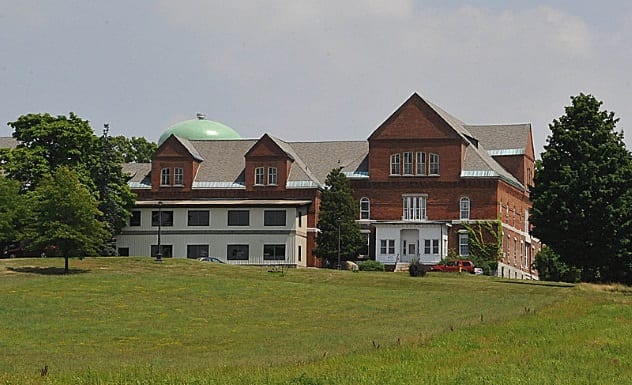
An abandoned asylum is always likely to have a fairly eerie atmosphere, but the Willard Asylum for the Chronic Insane takes it to a whole other level. Situated in Willard, New York, it was originally built in the 1860s to be a place of safety for the mentally ill at a time when “treatments” such as imprisoning them in cells or leaving them chained up in poorhouses were common. The idea came from Dr. Sylvester D. Willard, and the asylum was organized in a way that was typical for the period, with men and women kept apart, but with a cinema, gym, and bowling alley among the facilities, there was clearly an effort being made to make its residents happy.[3]
Despite the attempts to make Willard Asylum a more progressive place for treating the mentally ill, the presence of a graveyard full of thousands of unnamed markers for those who died there is grim reminder that it was still essentially a prison. However, what really gave Willard Asylum its unsettling reputation are the suitcases that were discovered in an attic after the facility was shut down in 1995. Numbering more than 400, these suitcases contained personal items that had been brought to the asylum by new inmates. They provide a melancholy glimpse into the lives of its residents, many of whom never left and are among those buried anonymously in its cemetery. Among the possessions found in these suitcases were everything from children’s toys and books to family photos.
7 The Murder House
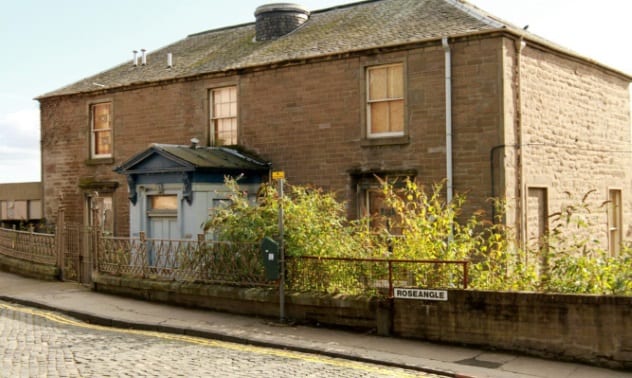
The Scottish city of Dundee has known its fair share of violent crime, but the events that took place at its infamous “murder house” have earned a place in local folklore. The large three-story house is located in the wealthy Roseangle area of the city, and it is a place that most of us would be happy to live in—but it remained derelict for decades. It was the home of a retired doctor named Alexander Wood and his wife Dorothy, both of whom were in their late seventies when their lives were brutally ended in May 1980. The frail elderly couple were attacked by an intruder, who beat them to death using a hammer. The scene of the killings was so gruesome that Detective Chief Superintendent Jim Cameron, who was in charge of investigating the crime, said at the time that the degree of violence involved was “not normal.”[4]
The killer turned out to be a local man named Henry John Gallagher, who committed a further two horrific killings in Kent before being captured. Gallagher was judged to be insane and went to Broadmoor Hospital instead of prison, which seems reasonable, given that the scene he left behind at the house in Roseangle was described as looking like an abattoir. Meanwhile, the murder house became a bleak feature of the landscape in the center of Dundee and part of the Dark Dundee visitor tour. As of August 2018, plans had been made to turn the murder house into a bar and restaurant.
6 Fort Douaumont
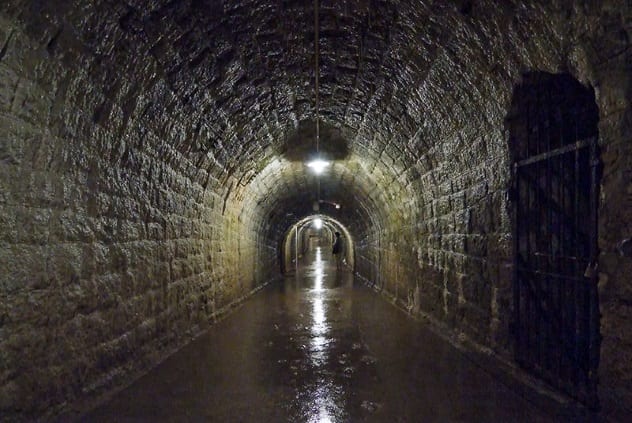
This fort is situated not far from Verdun, France, and it was designed to prevent the Germans from invading that region in the aftermath of the Franco-Prussian War. It did not actually come into play until World War I, but by this time, the French had abandoned the use of fixed fortifications as a military defense, and the small garrison left at the fort were easily overpowered by the Germans when the latter staged a surprise strike at the start of the Battle of Verdun.
The French army eventually regained control of it in October 1916, with the public in France demanding that all energy be put into reclaiming a building they saw as a symbol of their nation as a whole. The battle to win it back was bloody and involved intensive shell attacks, which hit the supplies of ammunition and grenades that were kept in the center of the fort. Some 800 Germans were killed by the mix of toxic smoke and explosions.
With the fort under assault, the dead could not be buried outside and had to be put into one of the fort galleries and sealed in.[5] Some of the skeletal remains are now buried in the fort cemetery and ossuary, but others remain forever walled in within the building itself.
5 St. Gerard’s Hospital
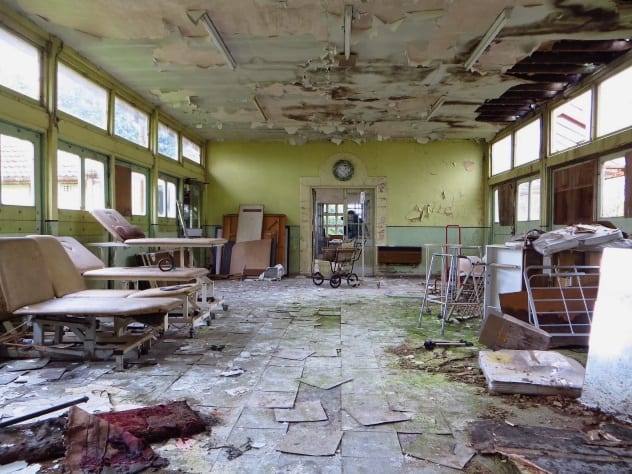
Abandoned hospitals have the same potential as asylums for creepiness, and St. Gerard’s certainly fit that particular bill. It was located in Birmingham in the UK and was built by a local charity called the Father Hudson Society as a facility for poor children who were suffering from tuberculosis and other illnesses caused by poverty. It was originally constructed back in the 1890s and remained in use for almost a century before closing its doors for the last time in 1988. It lingered for roughly 30 years before it was finally knocked down.
What made St. Gerard’s such an unnerving place to walk around was the fact that the contents of the building weren’t removed. These included beds, wheelchairs, hospital equipment, syringes coated in blood, X-rays and medical charts of children who were treated there, and the toys and coloring books that they amused themselves with.[6] Most of these items had been damaged by weather conditions over the years since the hospital shut down but remained intact, making the presence of those who once worked and received treatment there feel almost tangible for anyone exploring the derelict building.
4 Church Of The Nine Ghosts
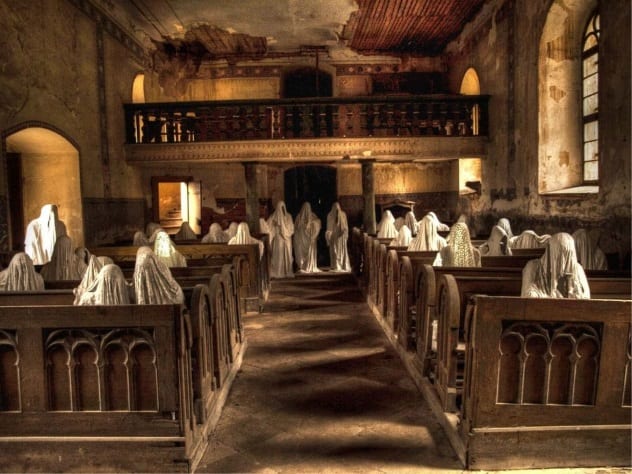
The actual name of this 14th-century church is St. George’s Church, and it is in Lukova in the Czech Republic, where it was consecrated in 1352. From the very beginning, it developed an association with darkness, as it was ravaged by fires on more occasions than anyone would expect of a church. However, despite this spate of strange events, the church was continually rebuilt and repaired until one final disaster in 1968 proved the last straw for residents of the village. During a funeral service that year, the roof of the church caved in, which led many local people to believe that it was haunted, so the church was finally abandoned.[7]
That’s creepy enough, but it wasn’t the end of the story. After it stopped being used as a church, the inside of the building started to fall into disrepair, and Jacob Hadrava, an artist from the local area, decided to save it from being knocked down by turning it into an art installation. He created nine shrouded figures made of plaster that sit in the pews—hence the nickname “Church of the Nine Ghosts.” Hadrava called his finished work My Mind, and it has become a popular tourist attraction among the sort of people who listen to Joy Division on their summer holidays. More ghostly figures have since been added to the original nine.
3 Hulme Hippodrome
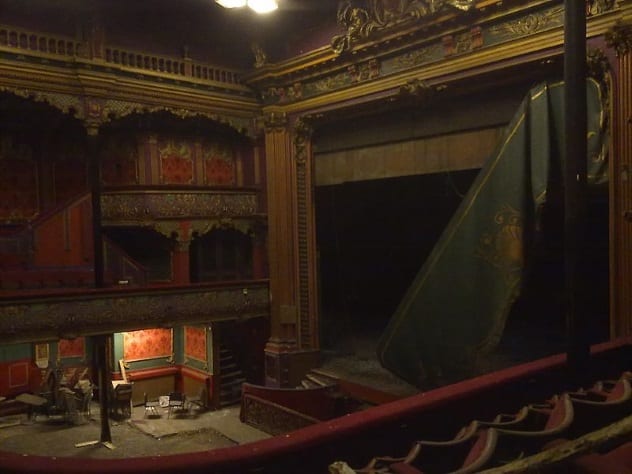
This abandoned theater is located in Manchester, England, and opened its doors in 1901, staging music hall performances for years before being given the new name of the Second Manchester Repertory Theater in the 1940s. It later went on to play host to legendary artists like Nina Simone, but after a period when it was used as a venue for bingo during the 1970s, it was closed down and went on to become a source of fascination for many people living in Manchester.
While any derelict theater has an element of eeriness about it because it was once full of life, laughter, and people, the connection Hulme Hippodrome has with the strange Gilbert Deya Ministries is what really makes it creepy. This organization bought the building and used it to hold church meetings, at which Deya allegedly told infertile couples that he could provide them with what he called “miracle babies.” Deya and his church were investigated by the BBC in 2004 over suspicions that these babies were being kidnapped from families in Nairobi, Kenya. The investigation found that the babies that he claimed had been born to couples in the UK did not have the same DNA as the people who were supposed to be their parents, and Deya was eventually sent back to Kenya to face charges of child trafficking in 2017.[8]
2 Hirta
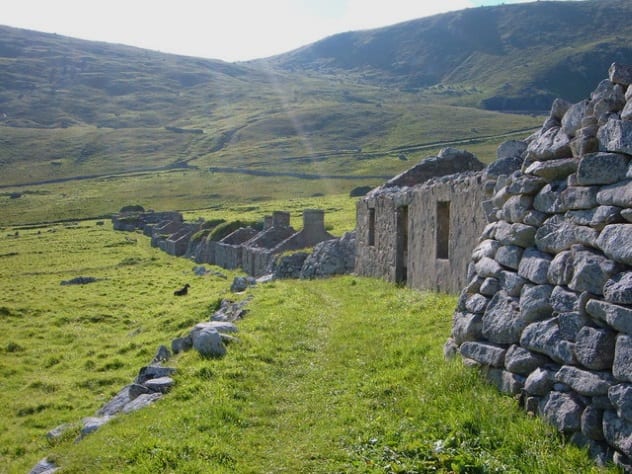
This entry is actually several buildings that make up a settlement on the Scottish island of Hirta. Hirta is part of the St Kilda archipelago and is one of the most remote places in the whole of the UK—as well as being empty since the residents left in 1930. At one time, Hirta was the place on St Kilda where the majority of people lived, with the residents of the island growing potatoes and barley, catching fish, and eating eggs and meat from seabirds.
Life in this detached location was surely never easy, but the story behind the final abandonment of it is very bleak. The settlement had survived a number of tough experiences, including an epidemic of smallpox in 1727, but the winter of 1929 proved to be so brutal that it led to multiple deaths, decimating the community and leaving only 36 remaining. Grief and desperation led those who had survived the harsh winter weather to plead with the government for a move away from the island to the mainland. Although the island was evacuated almost 90 years ago, buildings such as houses and the school hall are still there and are now sometimes visited by tourists.[9]
1 Red Dress Manor
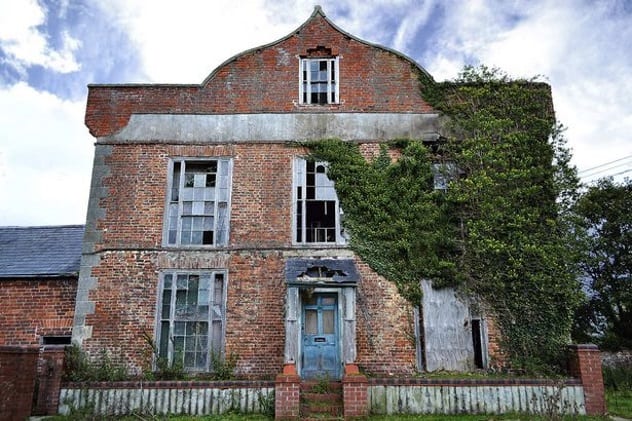
The actual name of this abandoned farmhouse in Powys, Wales, is Calcott Hall, and it was originally built back in 1725. The last person to live there was a woman named Ellen Jones, who died during the 1970s. Everything in the house has remained exactly as she left it since her death, making it appear as if she is still alive and has simply gone out. The house still has the food that she left in the fridge, as well as paperwork with her personal details on it and photographs from different parts of her life.
The odd nickname that the building has been given by local people stems from the presence of a red dress that belonged to Jones and that she left hanging over a door, where it has remained for over 40 years. Just in case there is any doubt that she was the owner of this dress, there is also a framed photograph of her wearing it hanging on one of the walls.[10] Little is known about Jones, her life, or what she died of, but it would be hard to walk around her home without feeling her ghost haunting the place.
I am a freelance writer based in Dundee who has previously written sketches and jokes for BBC radio shows. I also make short films as a member of Wardlaw Films.
Read about more foreboding vacant locations on 10 Perfectly Macabre Abandoned Buildings and 10 Terrifyingly Creepy Abandoned Hotels.








